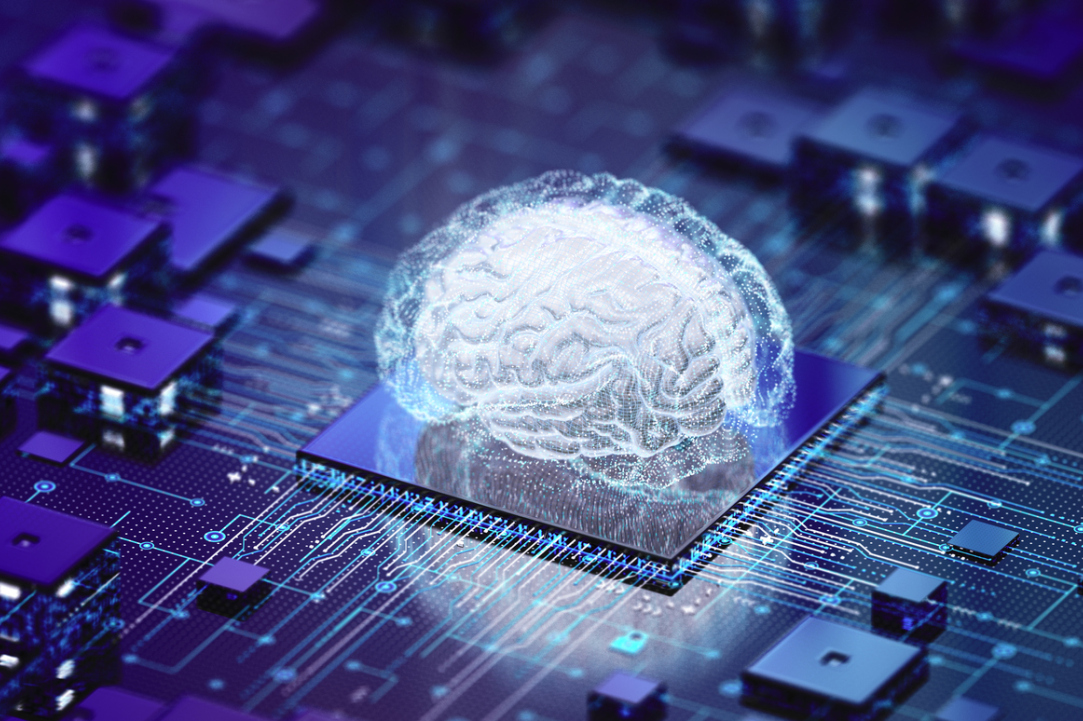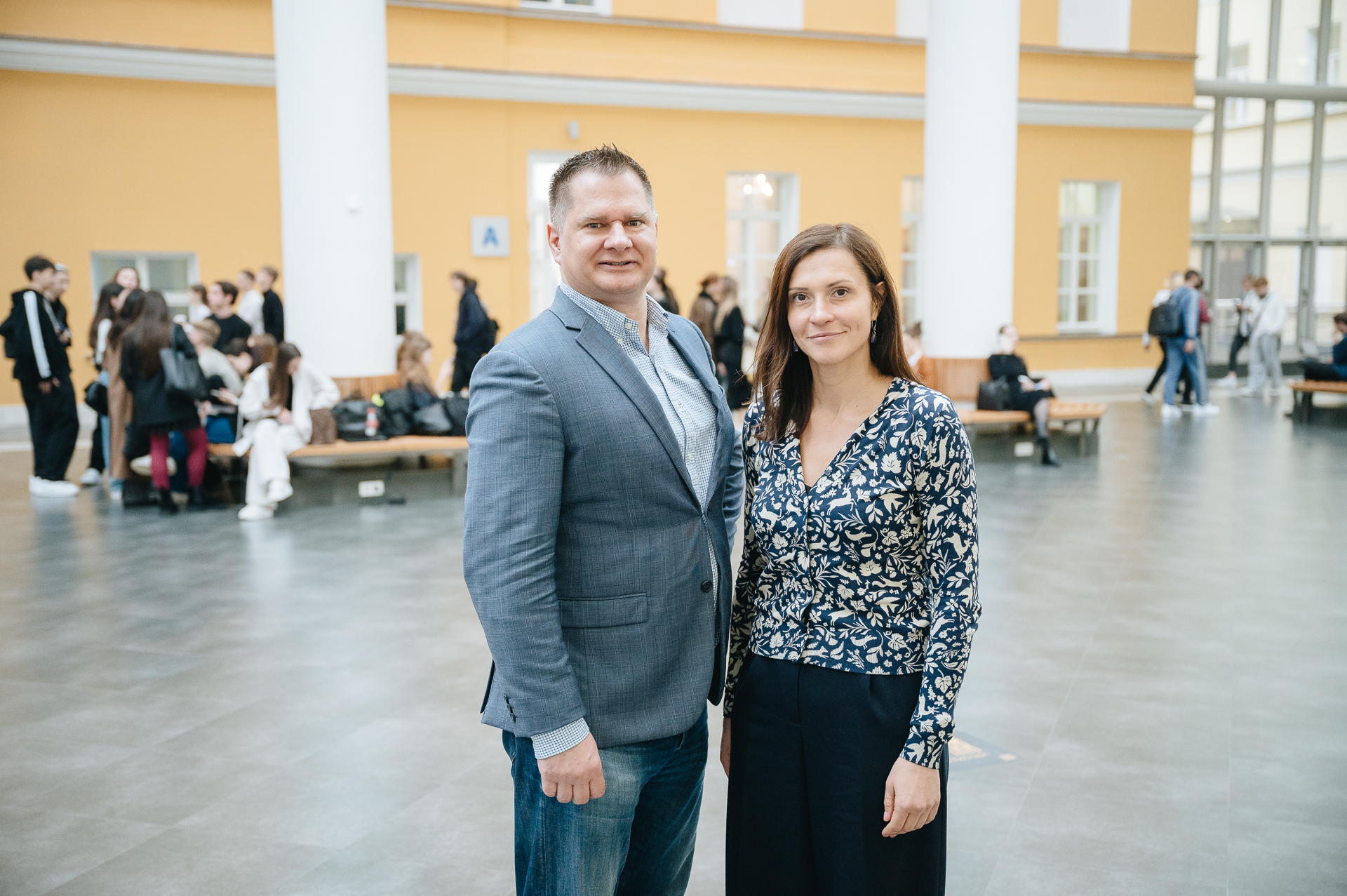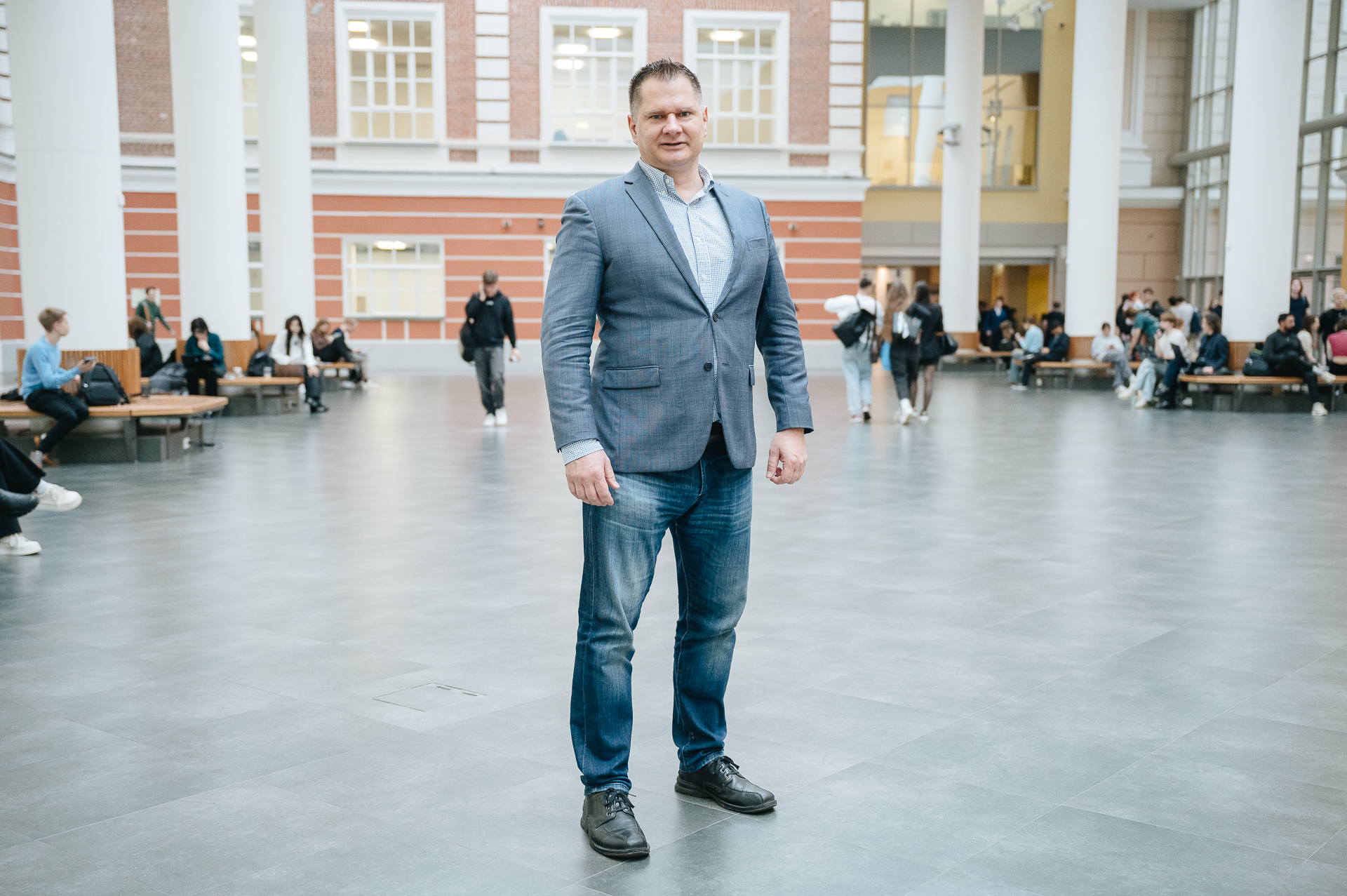'We Are Creating the Medicine of the Future'

Dr Gerwin Schalk is a professor at Fudan University in Shanghai and a partner of the HSE Centre for Language and Brain within the framework of the strategic project 'Human Brain Resilience.' Dr Schalk is known as the creator of BCI2000, a non-commercial general-purpose brain-computer interface system. In this interview, he discusses modern neural interfaces, methods for post-stroke rehabilitation, a novel approach to neurosurgery, and shares his vision for the future of neurotechnology.
Brain-Computer Interfaces
Neural interfaces are technologies that establish a direct connection between the brain and a computer. Special devices, such as electrodes placed on the scalp, on the brain's surface, or within the brain, are used to detect brain signals. These signals are then processed and converted into meaningful information, which can be transmitted to electronic devices such as computers, prosthetics, or speech synthesisers.
Just as smartwatches or other wearable devices give us useful information about our body, such as heart rate or the number of our steps, neurotechnology can provide important information about the health of our brain or can even help to improve it. In contrast to wearable devices, neurotechnologies are currently still used almost exclusively in laboratory settings and in limited testing in the clinic. For example, clinicians use them for rehabilitating patients after strokes or brain injuries, restoring speech functions, and performing neurosurgical procedures.
I have spent my career understanding the neural basis of neurotechnologies and on facilitating their transition into wider areas of research and the clinic. Indeed, my BCI2000 software is now the most widely used software for studying neurotechnologies. My team and I have been developing this software for nearly 25 years, and there is still quite some room for further improvements. Essentially, BCI2000 is similar to Linux or Android systems since it can be used across various applications.
A New Approach to Rehabilitation
Many post-stroke patients experience a loss of motor or speech functions. Conventional rehabilitation methods involve regular therapy sessions at specialised clinics. Patients are asked to repeat specific words or phrases multiple times and perform various exercises.
However, this approach has several limitations: therapy sessions can only take place at a facility under professional supervision. It can be inconvenient for patients, complicated, and expensive. Additionally, once patients return home, they often discontinue therapy sessions and miss the opportunity for a full recovery.

Together with HSE, we have been developing a new rehabilitation system that uses neurotechnologies. It is designed to aid language recovery in patients with aphasia who have lost the ability to speak coherently and express their thoughts following illness or injury. Instead of repeating phrases, patients are invited to play a game. Special sensors are attached to the head to monitor brain signals. The person sees a picture on the screen and hears several words, one of which corresponds to the image. The brain must identify the correct word. If the system can detect from the brain signal that the person identified the correct word, the person receives a reward such as a smiley face. In this way, even individuals who have lost the physical ability to speak can engage in this exercise.
We now have a prototype of this system. Our next goal is to make it accessible and understandable to people without specialised knowledge. The system should be extremely simple, allowing anyone to use it, including junior medical staff at any hospital. Patients only need to place a special device on their head and begin playing.
Today, neurotechnology for rehabilitation is like a delicate young sprout. To allow it to grow stronger and flourish, we cannot immediately place it in the heart of a dense forest. We must cultivate it separately and only then integrate it into the broader environment. In our case, that means the healthcare system. This is a crucial and challenging task that requires time, expertise, effort, and patience. We are gradually creating a new model of medicine that will not replace but complement the existing one, which is primarily based on pharmacological solutions.
Invasive Neurotechnologies: A Revolution in Neurosurgery
Another important application of neurotechnologies is functional brain mapping. In brain surgery, eg when removing tumours, it is critically important to identify areas of the brain that control movement, language, and other functions. The surgeon does not always see the tumour’s boundaries, as it may not visually differ from the surrounding tissue. Meanwhile, the cost of an error in neurosurgery is extremely high: if too much tissue is removed, the patient could lose the ability to walk or speak.
Conventional brain mapping methods involve electrical stimulation of the brain. A clinician applies an electrical current to a specific area of the patient's brain, and if the patient's arm twitches or they stop speaking, it indicates that the area is responsible for motor or language functions, respectively. This process requires significant patient involvement directly on the operating table. Additionally, electrical stimulation can sometimes trigger seizures.

We have developed a simpler and safer method that analyses brain signals while the patient performs simple tasks. We use electrocorticography, which involves placing electrodes directly on the surface of the brain. The patient performs several tasks simultaneously, such as speaking, sticking out their tongue, and moving their hand. We monitor brain signals, and if we detect an increase in activity in a specific area, we can infer that this region is involved in the corresponding function. Brain mapping requires a personalised approach. While everyone's brain is generally structured similarly, functions are located in slightly different areas in different people, and tumours can further distort these areas. Therefore, for the surgeon to operate with precision, it is essential to map each individual functional area of the brain.
Neurotechnologies of the Future
There is extensive media coverage of neuroprostheses—electronic implants that help people regain the ability to walk, see, or hear. Last year, my colleagues and I demonstrated that we could read brain signals and convert them into natural-sounding speech. We were able to recreate a Pink Floyd song by analysing neuronal activity. This work contributes to neuroprostheses that can restore speech function. While all of this may seem ambitious, futuristic, and reminiscent of science fiction novels, we will initially only be able to help some people.
In the case of neuroprostheses, we restore a lost ability in a patient—whether it's the ability to walk, see, hear, or speak—without altering anything in the brain itself. In the case of rehabilitation using neurotechnologies, we aim to reorient the functioning preserved part of the brain to take over functions that were previously controlled by other areas. These changes may be less spectacular, but they are much deeper and more complex, with potential and benefits that are far greater.

To pursue these exciting goals, we don't necessarily need to invent completely new technologies, but we certainly need to continue to learn how to configure the existing ones correctly and effectively. It is important to integrate these technologies into clinical practice, train clinicians, and earn the trust of patients. It's a long journey ahead, but we are already at the start of a new revolution in medicine.
Translating neurotechnologies into practical devices for monitoring health in everyday life is one of our primary goals. They should become a valuable tool for monitoring personal health, and should be accessible to everyone, not just to clinicians and researchers. For example, a person may wear a headband while sleeping and receive a report in the morning about the quality of their sleep, the state of their nervous system, and stress levels, along with recommendations on how to improve their lifestyle—such as reducing alcohol consumption, going to bed earlier, or exercising more. If we can 'translate' brain signals into meaningful information, it will mark a significant step forward in preventive medicine.
See also:
Scientists Test Asymmetry Between Matter and Antimatter
An international team, including scientists from HSE University, has collected and analysed data from dozens of experiments on charm mixing—the process in which an unstable charm meson oscillates between its particle and antiparticle states. These oscillations were observed only four times per thousand decays, fully consistent with the predictions of the Standard Model. This indicates that no signs of new physics have yet been detected in these processes, and if unknown particles do exist, they are likely too heavy to be observed with current equipment. The paper has been published in Physical Review D.
HSE Scientists Reveal What Drives Public Trust in Science
Researchers at HSE ISSEK have analysed the level of trust in scientific knowledge in Russian society and the factors shaping attitudes and perceptions. It was found that trust in science depends more on everyday experience, social expectations, and the perceived promises of science than on objective knowledge. The article has been published in Universe of Russia.
Scientists Uncover Why Consumers Are Reluctant to Pay for Sugar-Free Products
Researchers at the HSE Institute for Cognitive Neuroscience have investigated how 'sugar-free' labelling affects consumers’ willingness to pay for such products. It was found that the label has little impact on the products’ appeal due to a trade-off between sweetness and healthiness: on the one hand, the label can deter consumers by implying an inferior taste, while on the other, it signals potential health benefits. The study findings have been published in Frontiers in Nutrition.
HSE Psycholinguists Launch Digital Tool to Spot Dyslexia in Children
Specialists from HSE University's Centre for Language and Brain have introduced LexiMetr, a new digital tool for diagnosing dyslexia in primary school students. This is the first standardised application in Russia that enables fast and reliable assessment of children’s reading skills to identify dyslexia or the risk of developing it. The application is available on the RuStore platform and runs on Android tablets.
Physicists Propose New Mechanism to Enhance Superconductivity with 'Quantum Glue'
A team of researchers, including scientists from HSE MIEM, has demonstrated that defects in a material can enhance, rather than hinder, superconductivity. This occurs through interaction between defective and cleaner regions, which creates a 'quantum glue'—a uniform component that binds distinct superconducting regions into a single network. Calculations confirm that this mechanism could aid in developing superconductors that operate at higher temperatures. The study has been published in Communications Physics.
Neural Network Trained to Predict Crises in Russian Stock Market
Economists from HSE University have developed a neural network model that can predict the onset of a short-term stock market crisis with over 83% accuracy, one day in advance. The model performs well even on complex, imbalanced data and incorporates not only economic indicators but also investor sentiment. The paper by Tamara Teplova, Maksim Fayzulin, and Aleksei Kurkin from the Centre for Financial Research and Data Analytics at the HSE Faculty of Economic Sciences has been published in Socio-Economic Planning Sciences.
Larger Groups of Students Use AI More Effectively in Learning
Researchers at the Institute of Education and the Faculty of Economic Sciences at HSE University have studied what factors determine the success of student group projects when they are completed with the help of artificial intelligence (AI). Their findings suggest that, in addition to the knowledge level of the team members, the size of the group also plays a significant role—the larger it is, the more efficient the process becomes. The study was published in Innovations in Education and Teaching International.
New Models for Studying Diseases: From Petri Dishes to Organs-on-a-Chip
Biologists from HSE University, in collaboration with researchers from the Kulakov National Medical Research Centre for Obstetrics, Gynecology, and Perinatology, have used advanced microfluidic technologies to study preeclampsia—one of the most dangerous pregnancy complications, posing serious risks to the life and health of both mother and child. In a paper published in BioChip Journal, the researchers review modern cellular models—including advanced placenta-on-a-chip technologies—that offer deeper insights into the mechanisms of the disorder and support the development of effective treatments.
Using Two Cryptocurrencies Enhances Volatility Forecasting
Researchers from the HSE Faculty of Economic Sciences have found that Bitcoin price volatility can be effectively predicted using Ethereum, the second-most popular cryptocurrency. Incorporating Ethereum into a predictive model reduces the forecast error to 23%, outperforming neural networks and other complex algorithms. The article has been published in Applied Econometrics.
Administrative Staff Are Crucial to University Efficiency—But Only in Teaching-Oriented Institutions
An international team of researchers, including scholars from HSE University, has analysed how the number of non-academic staff affects a university’s performance. The study found that the outcome depends on the institution’s profile: in research universities, the share of administrative and support staff has no effect on efficiency, whereas in teaching-oriented universities, there is a positive correlation. The findings have been published in Applied Economics.


